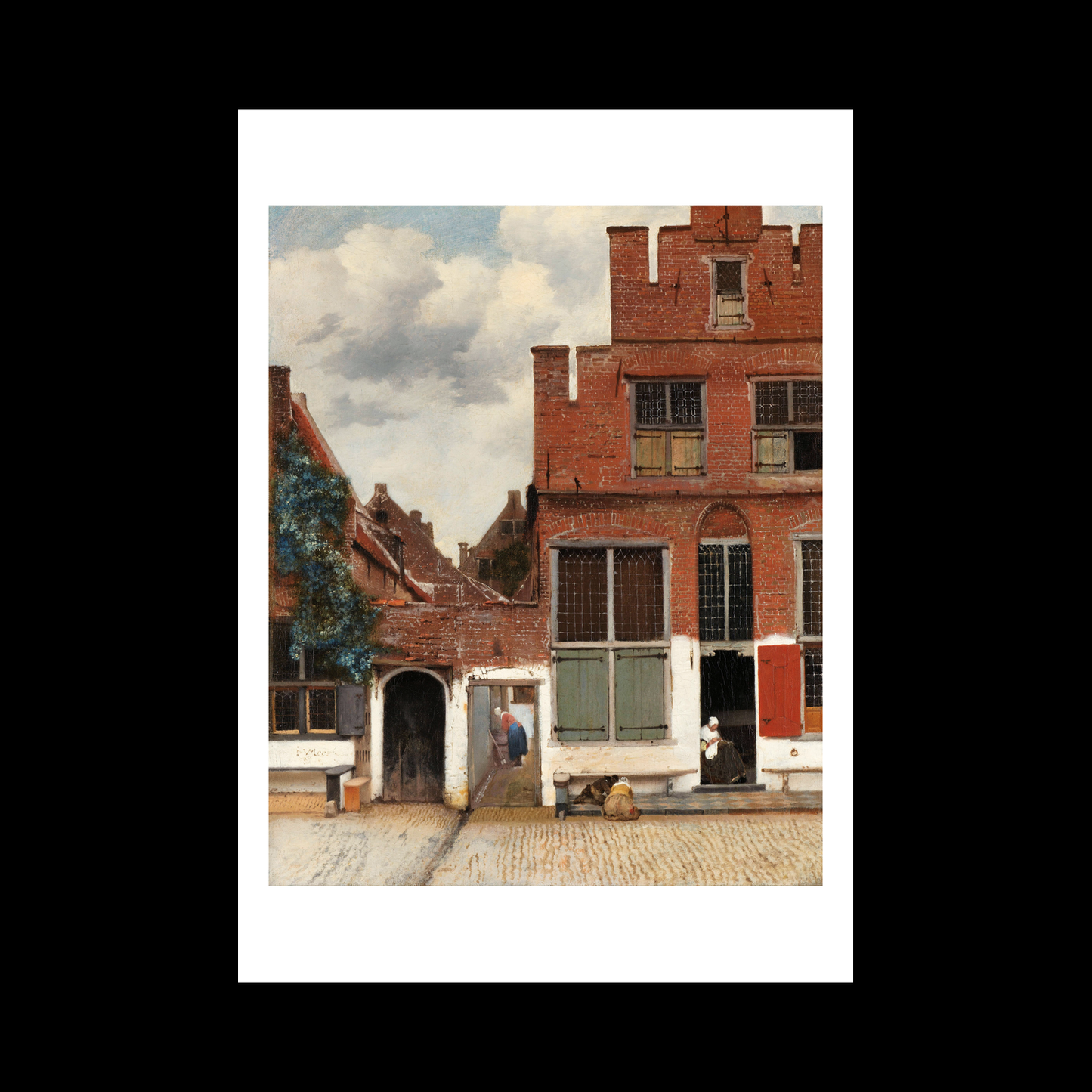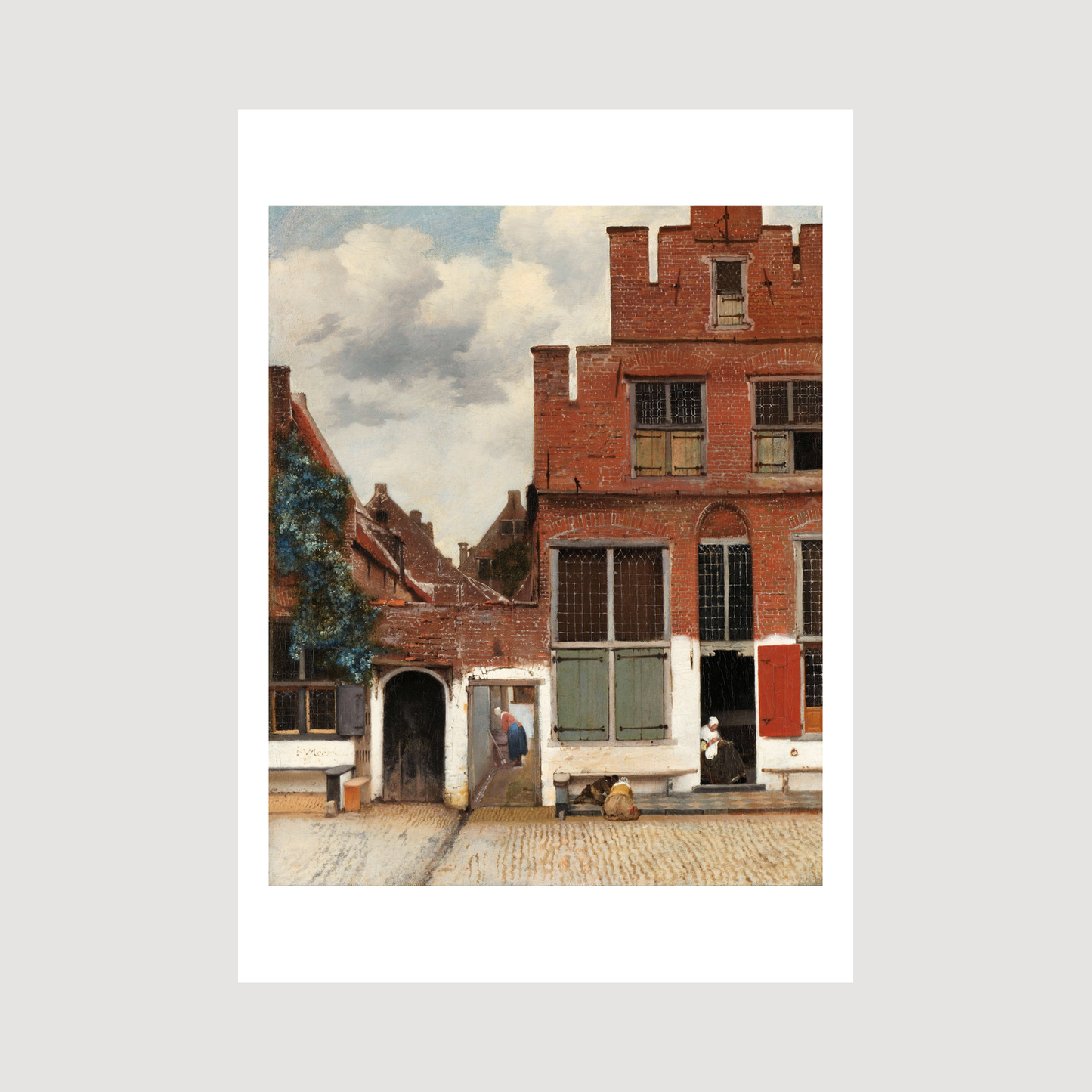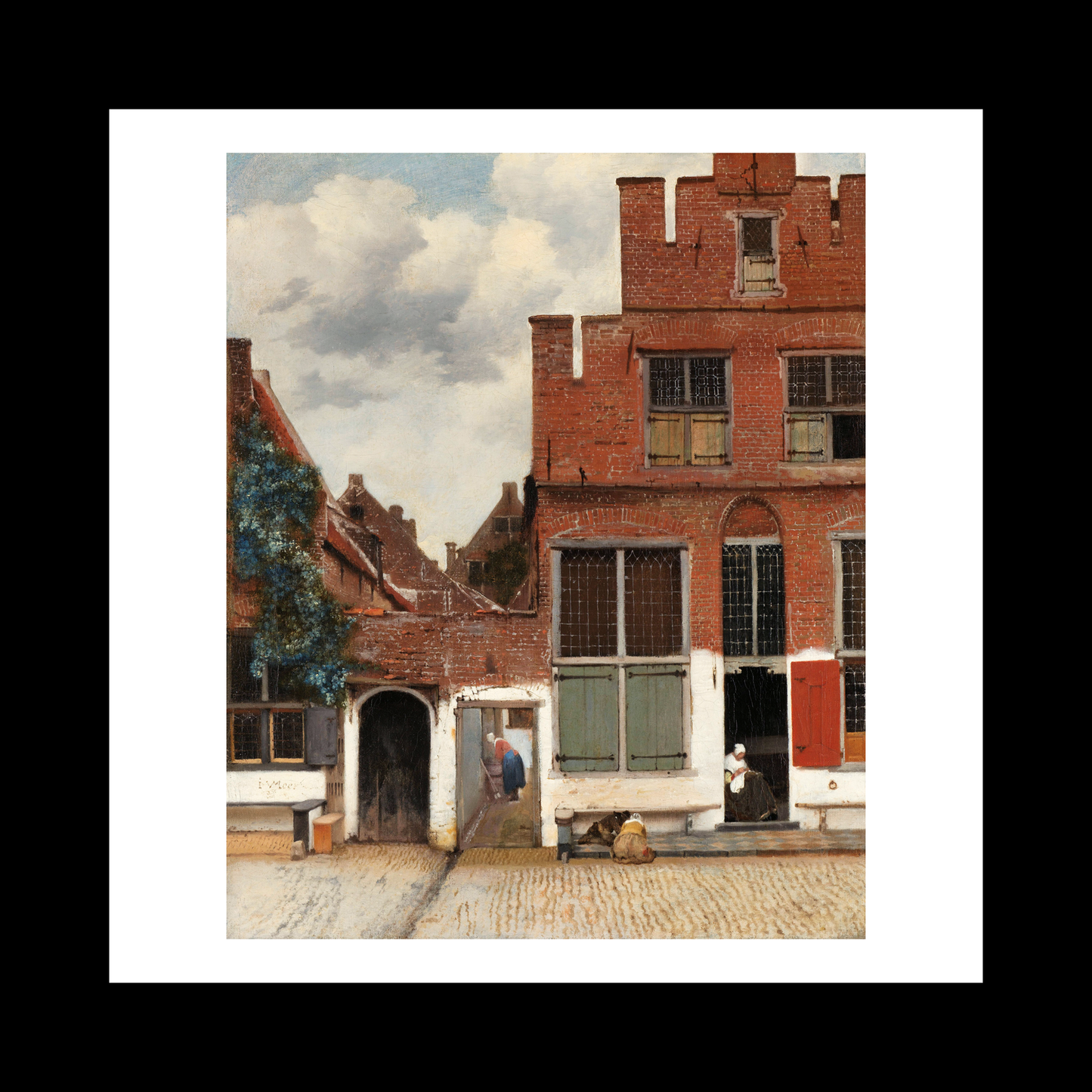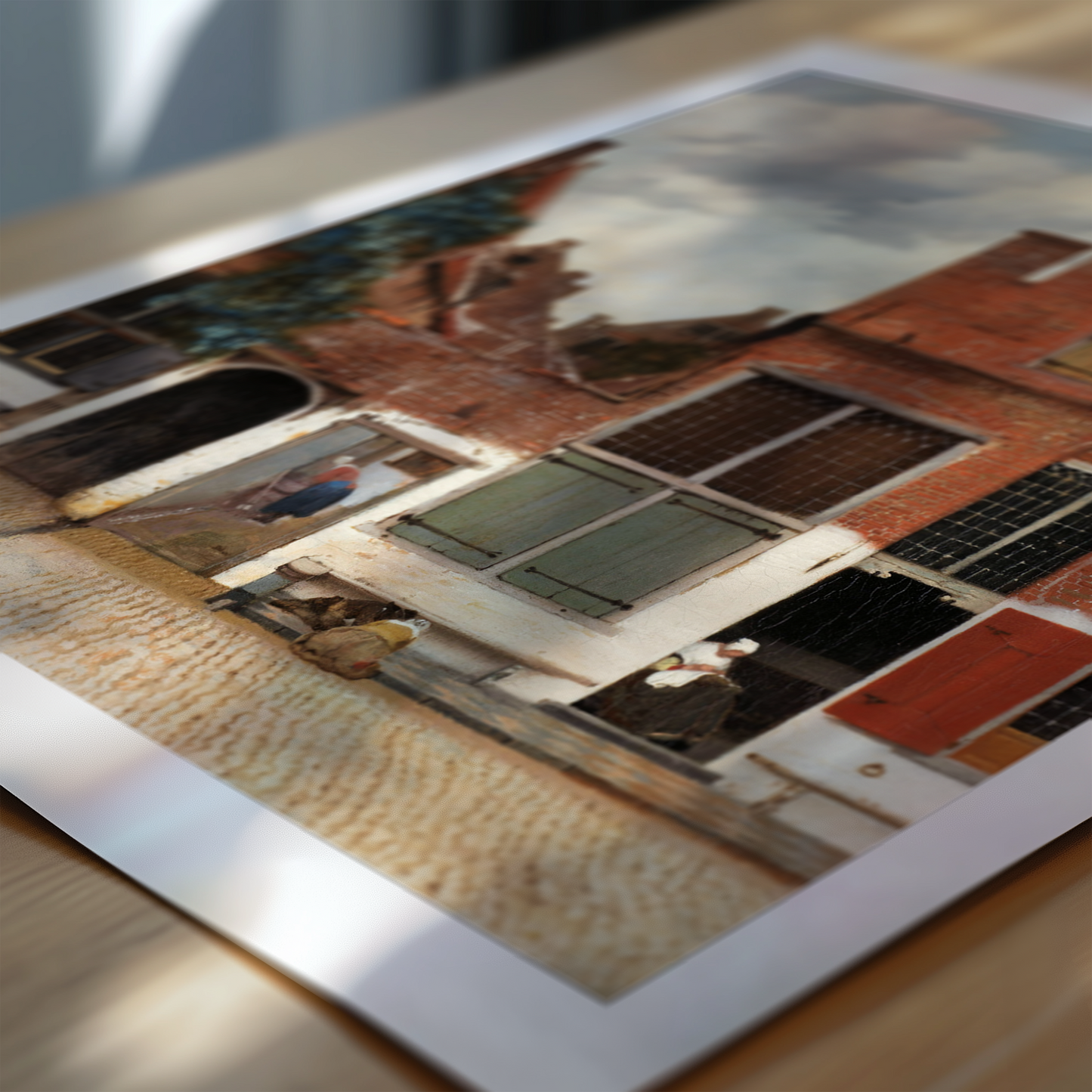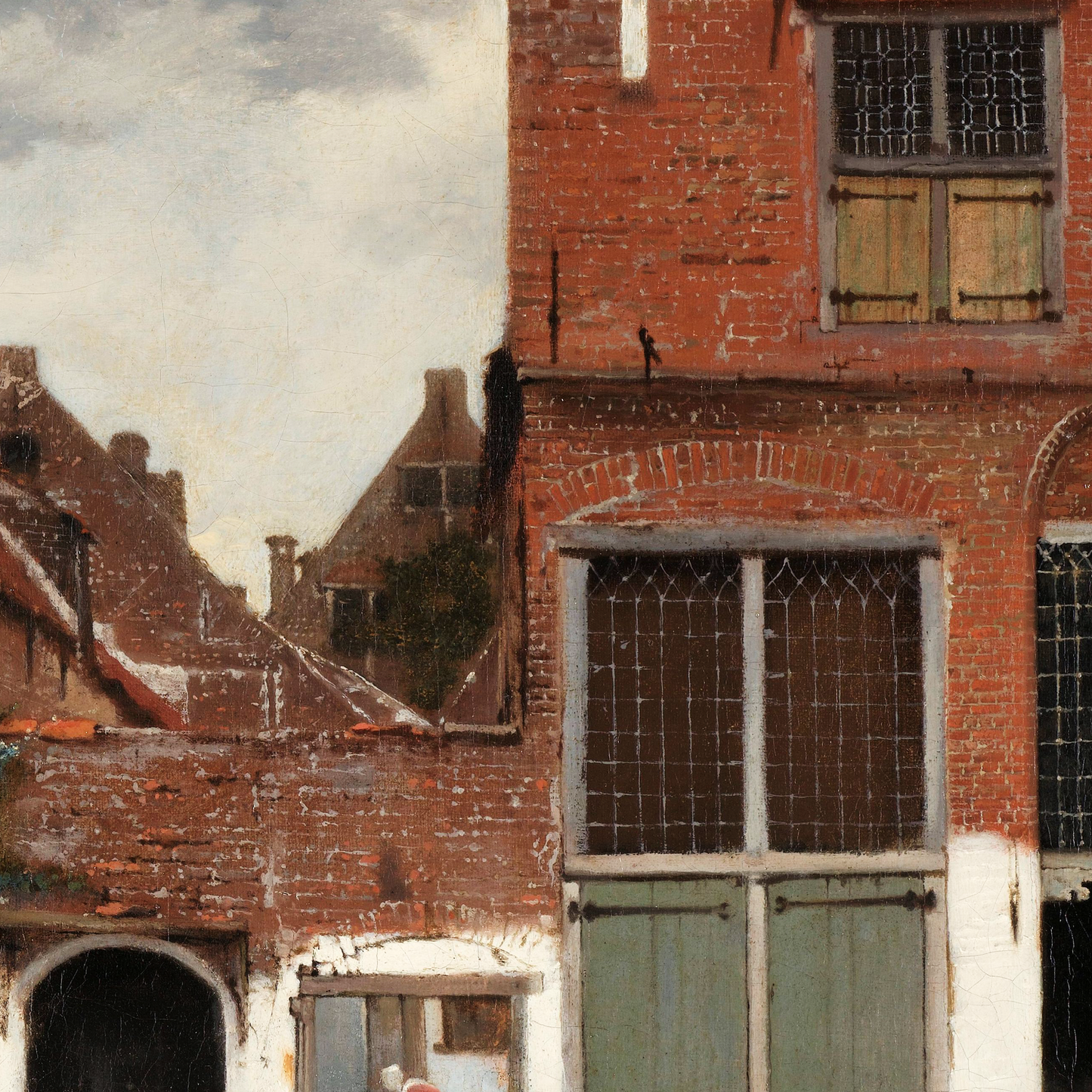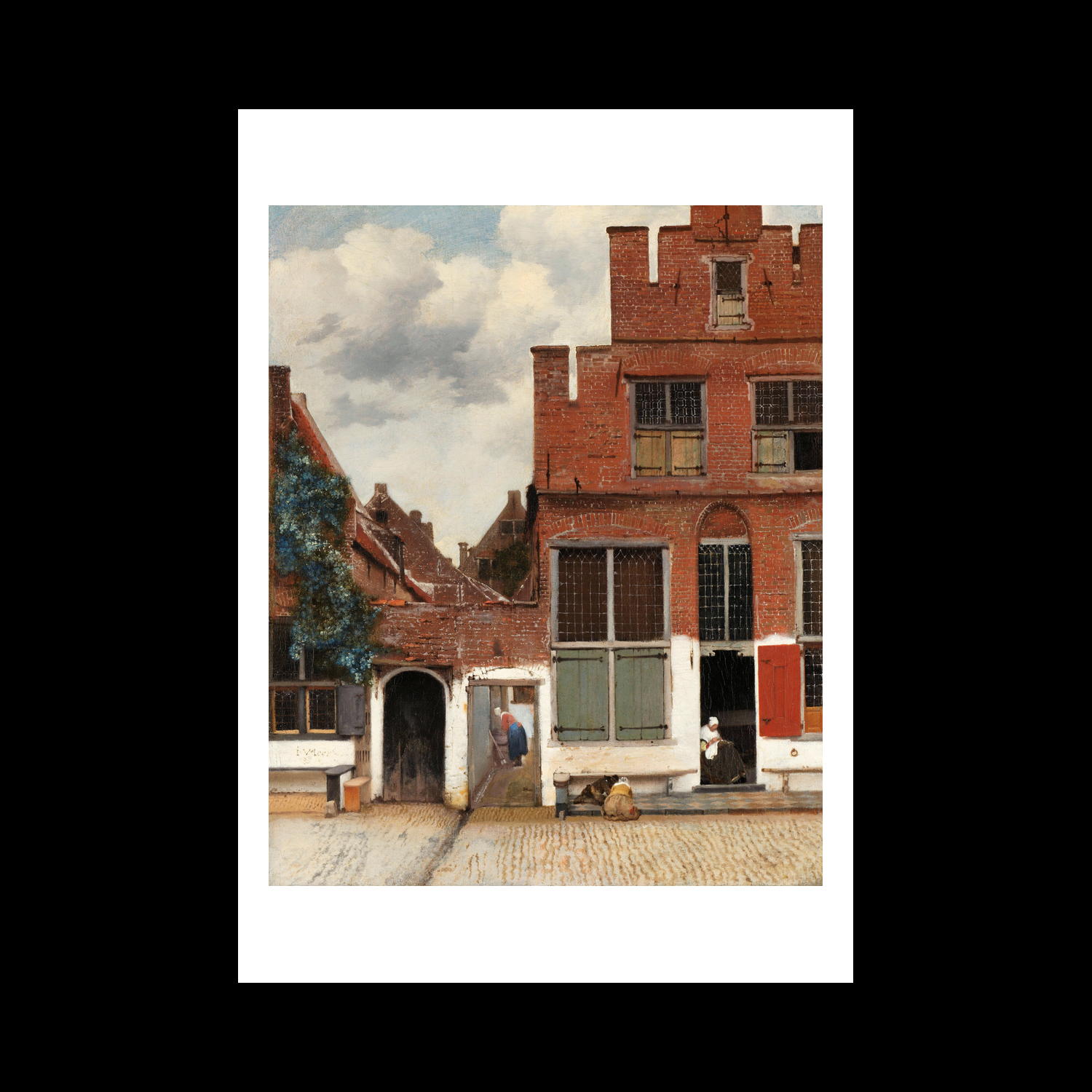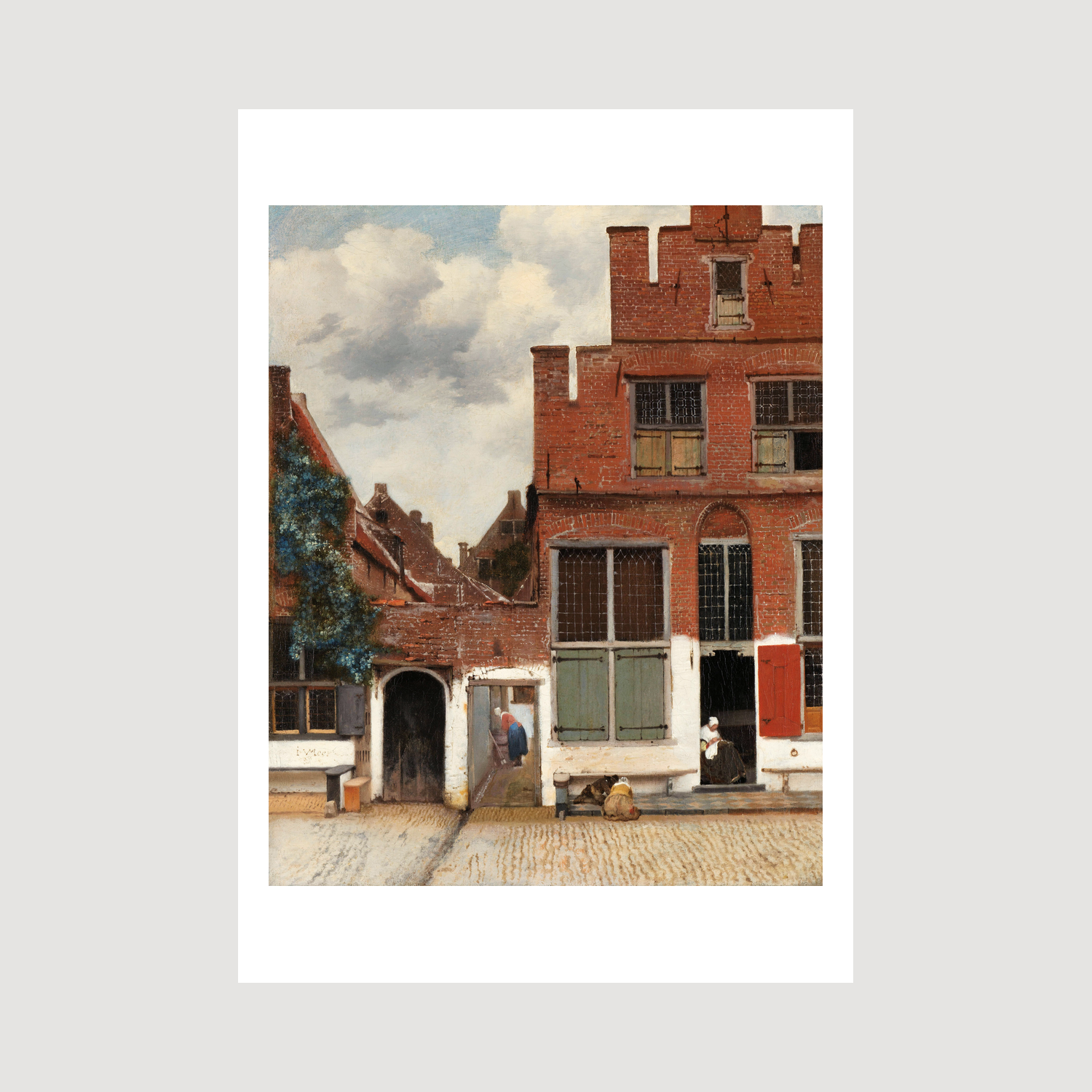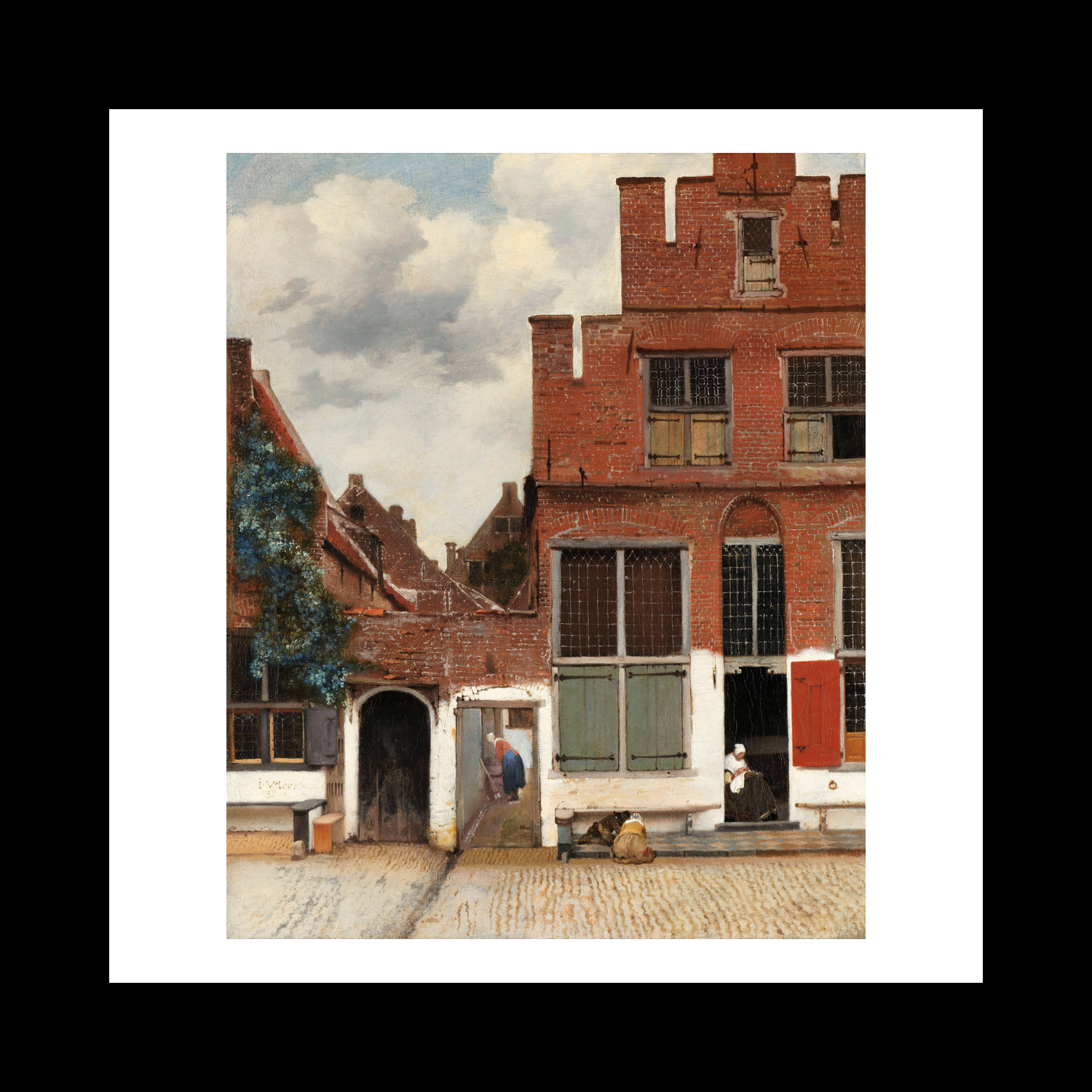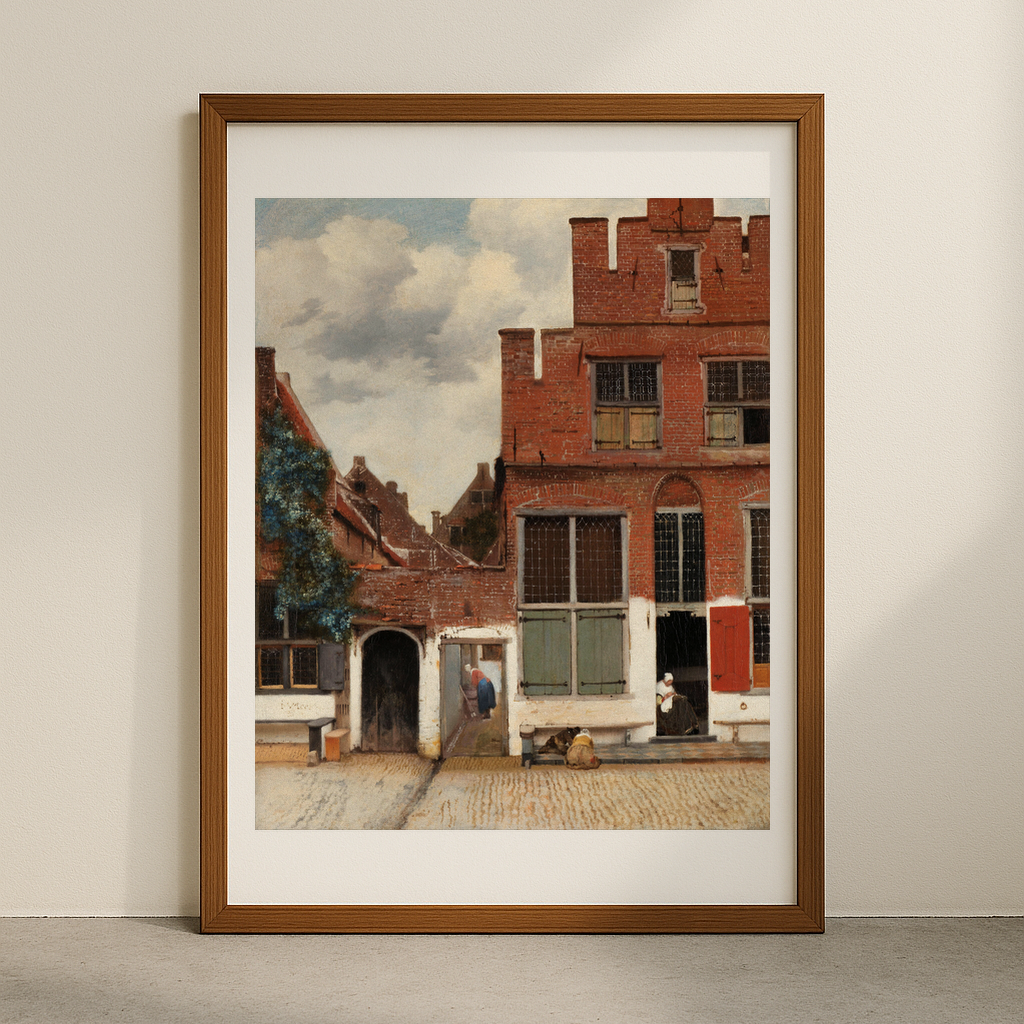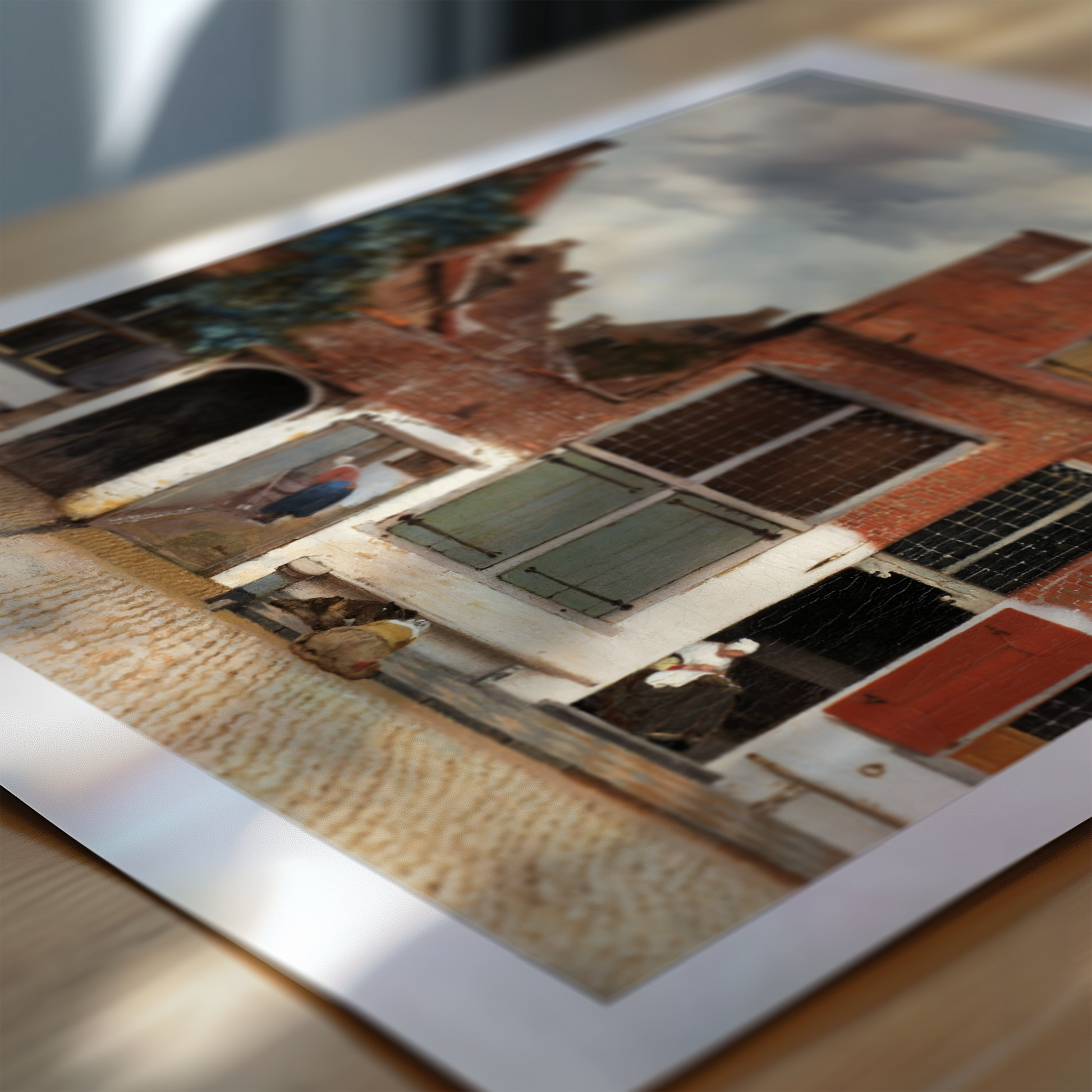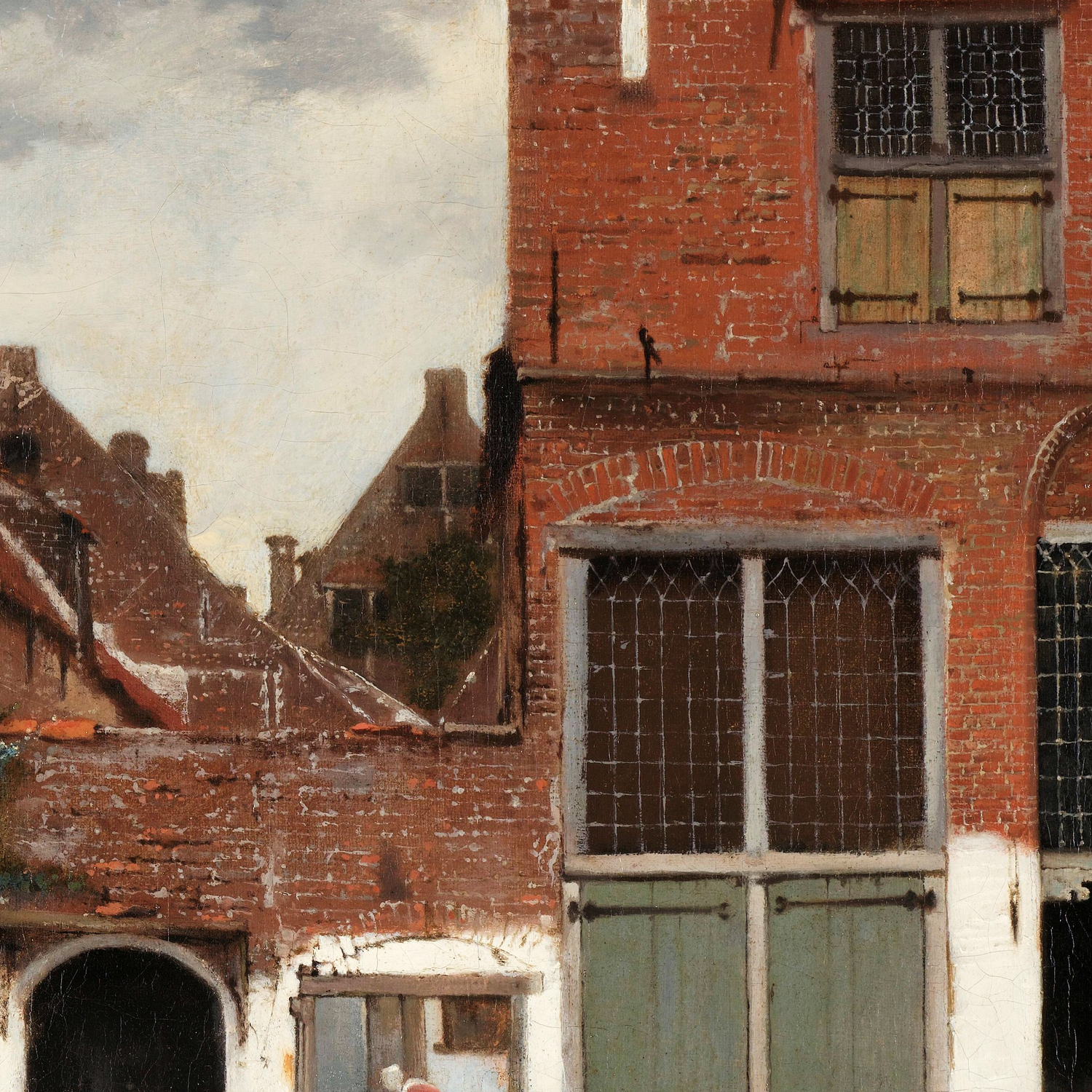1
/
of
6
The Little Street (1658)
The Little Street (1658)
Regular price
£12.45 GBP
Regular price
Sale price
£12.45 GBP
Taxes included.
Quantity
Couldn't load pickup availability
"The Little Street" by Johannes Vermeer offers an intimate glimpse into 17th-century Dutch daily life, showcasing the artist's extraordinary ability to capture ordinary moments with remarkable precision and warmth. This small oil painting depicts a quiet street in Delft, featuring typical Dutch houses with their distinctive red bricks, white-lined windows, and weathered facades. The meticulous attention to architectural details, from the worn cobblestones to the varying textures of the buildings, demonstrates Vermeer's mastery of observation and light.
What makes this work particularly fascinating is Vermeer's use of perspective and his treatment of light. The composition draws viewers into the scene through subtle geometric arrangements, while his signature handling of natural light creates an almost photographic quality - remarkable for the 1650s. The small human figures, engaged in everyday tasks like needlework and cleaning, add life to the scene without dominating it, reflecting the Dutch Golden Age's appreciation for the beauty in ordinary moments.
The painting holds special significance as one of only two surviving streetscapes by Vermeer, who typically focused on interior scenes. Created during a period when Dutch art celebrated domestic life and local settings, this work reflects both artistic innovation and cultural values of the time. Vermeer's choice to paint this particular view - believed to be from his hometown of Delft - speaks to his connection with urban domestic life and his ability to elevate seemingly mundane subjects into compelling visual narratives. His use of expensive ultramarine blue in the sky and careful rendering of light effects showcases both his technical skill and his commitment to quality, despite his relatively modest success during his lifetime.
View full details
What makes this work particularly fascinating is Vermeer's use of perspective and his treatment of light. The composition draws viewers into the scene through subtle geometric arrangements, while his signature handling of natural light creates an almost photographic quality - remarkable for the 1650s. The small human figures, engaged in everyday tasks like needlework and cleaning, add life to the scene without dominating it, reflecting the Dutch Golden Age's appreciation for the beauty in ordinary moments.
The painting holds special significance as one of only two surviving streetscapes by Vermeer, who typically focused on interior scenes. Created during a period when Dutch art celebrated domestic life and local settings, this work reflects both artistic innovation and cultural values of the time. Vermeer's choice to paint this particular view - believed to be from his hometown of Delft - speaks to his connection with urban domestic life and his ability to elevate seemingly mundane subjects into compelling visual narratives. His use of expensive ultramarine blue in the sky and careful rendering of light effects showcases both his technical skill and his commitment to quality, despite his relatively modest success during his lifetime.
